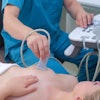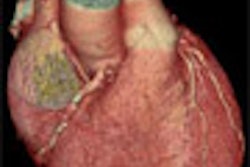Preoperative planning of total hip arthroplasty forces the surgeon to think in three dimensions, which is more likely to mitigate possible complications, such as dislocation or malfunction of the prosthesis. A group of orthopedic surgeons have backed x-ray for step-by-step mapping of hip replacement surgery.
In an article in the Journal of the American Academy of Orthopaedic Surgeons, Dr. Alejandro González Della Valle and colleagues detailed how they use radiographs for landmarking and templating this procedure. Della Valle's group is from the Hospital for Special Surgery in New York City and Cornell University in Ithaca, NY.
First, they reiterated that a standard radiograph of the hip includes an anteroposterior (AP) view of the pelvis centered over the pubic symphysis. Also included are AP and true lateral views of the affected hip, which affords lateral views of the femur and acetabulum. AP views should be obtained in a supine patient with the hips in an internal rotation of 10° to 15°.
To determine preoperative limb length (which can be attributable to hip anatomy), they suggested measuring the perpendicular distance from the proximal corner of the lesser trochanter to the reference line.
The authors also urged awareness of the magnification effect of x-ray. "Magnification is directly proportional to the distance between the pelvis and the film; therefore, increased magnification should be expected in obese patients," they wrote. The longest distance from the proximal corner of the lesser trochanter to the center of rotation of the prosthetic head will be most affected by magnification, they added. A magnification marker can be taped at the level of the patient's greater trochanter (JAAOS, November 2005, Vol. 13:7, pp. 455-462).
In terms of reviewing the x-rays, the rotation of the upper femur can be assessed by looking at the lesser and greater trochanters. The lateral view of the femur can aid in planning the location of the proximal femur opening in proximity of the piriformis fossa, Della Valle's group stated.
On x-ray, "the shape of the femur and acetabulum, as well as the trabecular pattern, should be examined to confirm the diagnosis and to choose between implant designs and fixation," they wrote.
For templating, they recommended the following:
- Templating should adhere to surgical steps, i.e., acetabular then femoral.
- Correct orientation of the acetabular is essential for arthroplasty stability.
- Once the acetabular template is in place, the center of rotation should be marked on x-ray.
- Limb length discrepancy on x-ray should be compared with clinical exam measurements.
The authors did point out that preplanning may not address every issue that crops up during surgery. For example, tactile feedback would still be the best way to choose stem size and for minimizing fracture risk. In addition, the range of motion should be manually assessed.
Nevertheless, the benefits of preplanning far outweigh the drawbacks, they stated. In a study out of Switzerland, orthopedic surgeons found that more than 80% of the problems encountered during surgery were addressed with preoperative planning (Journal of Bone and Joint Surgery British, May 1998, Vol. 80:3, pp. 382-390).
In a separate study, researchers at the Medical College of Georgia in Augusta determined that the accuracy of templating increased with a surgeon's experience. They looked at preoperative radiographs that were templated by a total joint arthroplasty attending surgeon, a senior orthopedic resident, and a junior resident. The accuracy of templating increased gradually with the level of training, with the most experienced investigator able to template within one size of the actual implant (Journal of Arthroplasty, August 1995, Vol. 10:4, pp. 507-513).
Della Valle's group concluded that planning with x-ray was particularly important for bilateral arthroplasty so that results can be reproduced on both sides.
By Shalmali Pal
AuntMinnie.com staff writer
January 18, 2006
Related Reading
Tibial-talar ratio on x-ray reliably shows ankle alignment, May 6, 2005
Ultrasound spots DVT after knee, hip arthroplasty, May 31, 2004
X-ray protocol improves total knee arthroplasty follow-up, May 26, 2004
Copyright © 2006 AuntMinnie.com



















